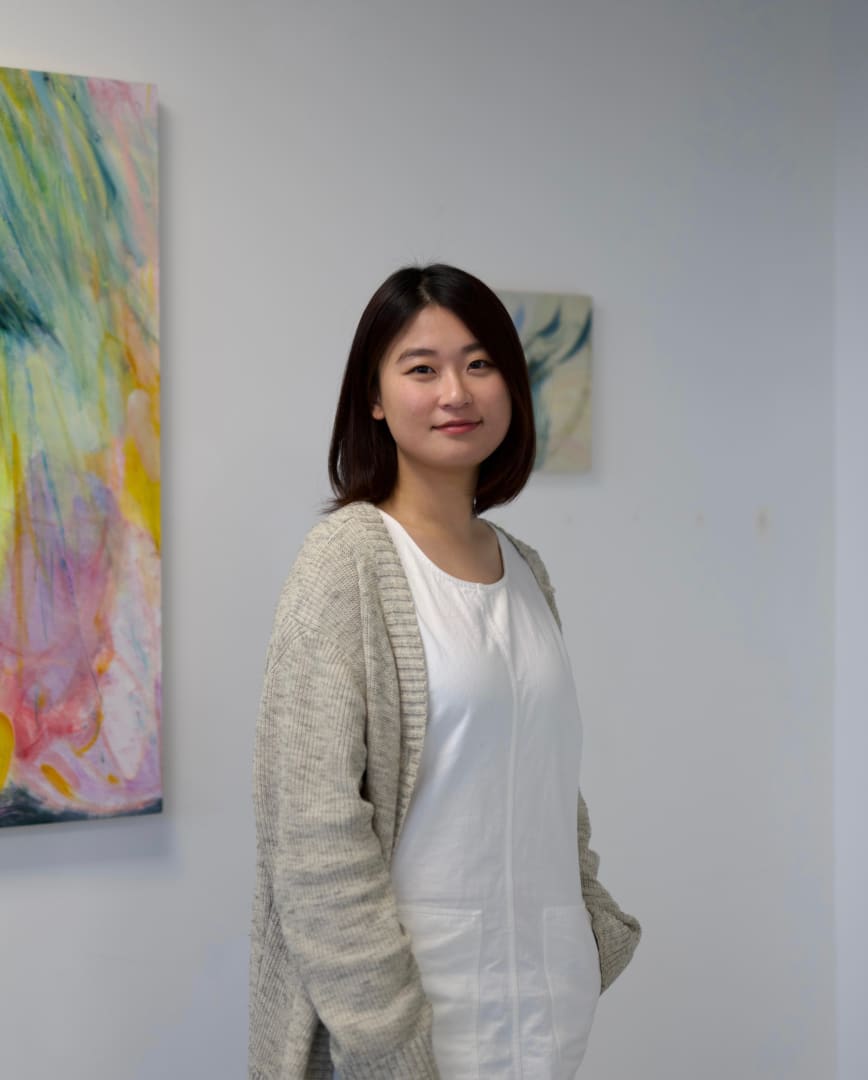"My recent body of work focuses on the fragmentation of reality. By which I mean from simply the co-exist of contradicting feelings, to the detachment between the body and spirit. I often feel as though my sense of self is split, composed of countless physical and spiritual fragments that operate like an undisciplined group rather than a unified whole."
Mengmeng's Instagram: @_menx2
How and when did you know you wanted to be an artist?
I never thought I could become an artist. I was the kid who was always drawing as I grew up, filling my time with art. As an only child, making art was something I did to feel less lonely—it was like I have someone to talk to. It felt like art was calling me when I graduated from art school and started looking for a job. I was hoping to work as a graphic designer, but the only response I got was from a gallery. They didn’t hire me as an employee, but they asked to see my artist portfolio. That’s probably when I realized that being an artist was actually an option—that this dream could be real.
What was your experience of art school?
At the beginning, it was really exciting—like finally finding a world full of people like me. I went to the China Academy of Art for my BA, which is the best school to learn art in China. Being there meant I was surrounded by like-minded people who cared about art. Art was just normal there; it didn’t need to be explained or justified. I was hard-working in maybe a very stupid way, a stubborn young girl trying to take on everything.
Over time in art school studying a Master's degree, I got used to being surrounded by artists, and it became normal. But looking back, I see what a luxury it was to have so many talented people with unique and excellent taste around me. It opened up so many possibilities in life, like having the best editors around, filtering information for my taste in music, film, books, fashion, etc…Art school taught me things about life that naturally fed into my art, which has been invaluable.
Can you tell us more about the ideas and inspiration behind your work?
I mainly work in contemporary painting, with a focus on themes like memory-image,
psychogeography, and phenomenology. My paintings explore the displacement between memory and the present, as well as the tension between inner emotions and outer environments. Through intuitive colour choices that reflect specific emotions, I use stylized characters to capture moods, actions, and fictional experiences inspired by my personal reflections on everyday moments. My recent body of work focuses on the fragmentation of reality. By which I mean from simply the co-exist of contradicting feelings, to the detachment between the body and spirit. I often feel as though my sense of self is split, composed of countless physical and spiritual fragments that operate like an undisciplined group rather than a unified whole. From the summer of 2024, the paintings I made with water-based paint on calico, aim to visualize and articulate this fragmentation I feel in everyday life, to explore the phenomenology behind everyday moments.
Are there other artists or movements that have inspired your work?
My recent research has been influenced by the French artist Emmanuelle Castellan, particularly her painting Gesture Recognition (2021). In that painting, she cuts through (physically and metaphorically) a thick linen canvas, painted with a character performing a sequence of movements, as if to create a forced pause. I’m drawn to how she uses the physicality of painting—cutting, folding, or other manipulations—to explore ephemerality: how can the language of painting be used to freeze or extend time?
Can you describe a typical day in the studio? How do you approach your work?
I’m currently studying MFA painting at Slade, so I spend my days working in the beautiful Slade painting studio, which used to be the Courtauld Gallery.
My studio hours are usually from 10 to 7 on weekdays. I start each day by making a few
watercolour/ink drawings on Chinese rice paper to a warm-up. Then, I move on to my main
paintings. I usually work on 2-4 paintings at the same time to keep things fresh and avoid getting bored. This allows me to move between images and have fresh stimulation from the paintings. A typical day in the studio ends with I almost feel like I might ruin a painting—that point where I start to lose my sense of judgment and control. Painting to me is all about decision-making, and overworking is a silly mistake (which I often make).
